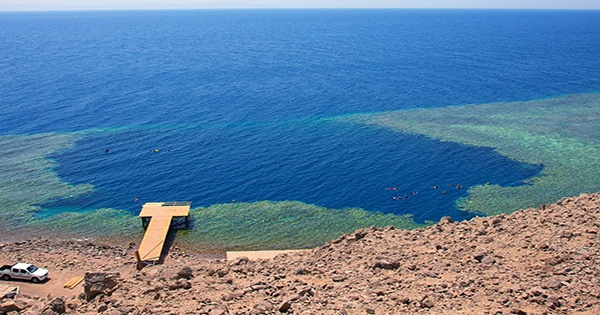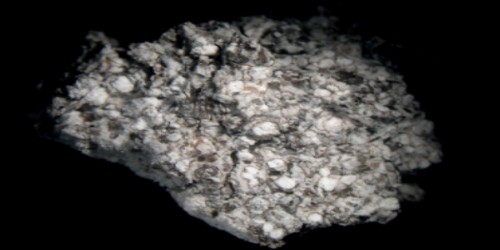A vast chasm that extends over 100 meters (328 feet) into the Red Sea lies off the shore of Dahab, Egypt. The Red Sea Blue Hole, which is surrounded by coral and reef fish and has a stunning cathedral-like arch, has earned the moniker “Diver’s Cemetery” because of its natural beauty, which continues to draw numerous divers to their demise.
In the vicinity of the hole, at least 40 divers have perished, although the true death toll is thought to be closer to 200. Plaques honoring the numerous divers who have attempted to travel the underwater cave system around the entrance.
Although the exact reason why the Red Sea Blue Hole is the world’s most dangerous diving destination is still unknown, it is believed that the hole’s geological structure is to blame.
The “saddle” entrance, which is only six meters (20 feet) deep and descends 120 meters straight, is near to the Dahab beach (328 feet). The hole leads off to a tunnel called “the Arch,” which is 55 meters (181 ft) down the sea cliff. The tunnel is compared to an underwater cathedral because of its 26-meter (85-foot) length and 65-meter (213-foot) floor-to-ceiling height.
Explorers dive into the Blue Hole often every day in spite of (or perhaps because of) its sinister reputation as a dangerous place to be.
The Blue Hole arch is avoided by tourists on tours and by recreational divers, but some thrill-seekers insist on going through the tunnel that has claimed so many lives.
In 1992, a technical driver from Dahab named Tarek Omar started delving into the hole. Soon after, in 1997, he started locating bodies. Omar earned the nickname “bone collector” as he began to remove more bodies from the depths.
Some local divers and instructors who operate in the area feel that the high number of fatalities is due to some people’s inexperience and lack of information when attempting to enter the arch.
But this geological feature’s complexity has its own difficulties.
Divers risk succumbing to nitrogen narcosis, also known as “the martini effect,” which causes physical and mental impairment similar to that caused by alcohol if they miss the entrance and continue down to the arch’s 120 meters (328 feet) depth. This is because the depth of the arch’s entrance is difficult to see.
Divers have occasionally run out of oxygen while attempting to exit through the arch due to underestimating the enormous length of the tunnel and the additional energy required to swim against the stream flowing in from the open ocean.
Numerous risks exist at the Red Sea Blue Hole, and as a result, many highly skilled and prepared divers have perished there. The Blue Hole is expected to continue being the world’s most dangerous diving location as the number of visitors doesn’t seem to be declining.
















